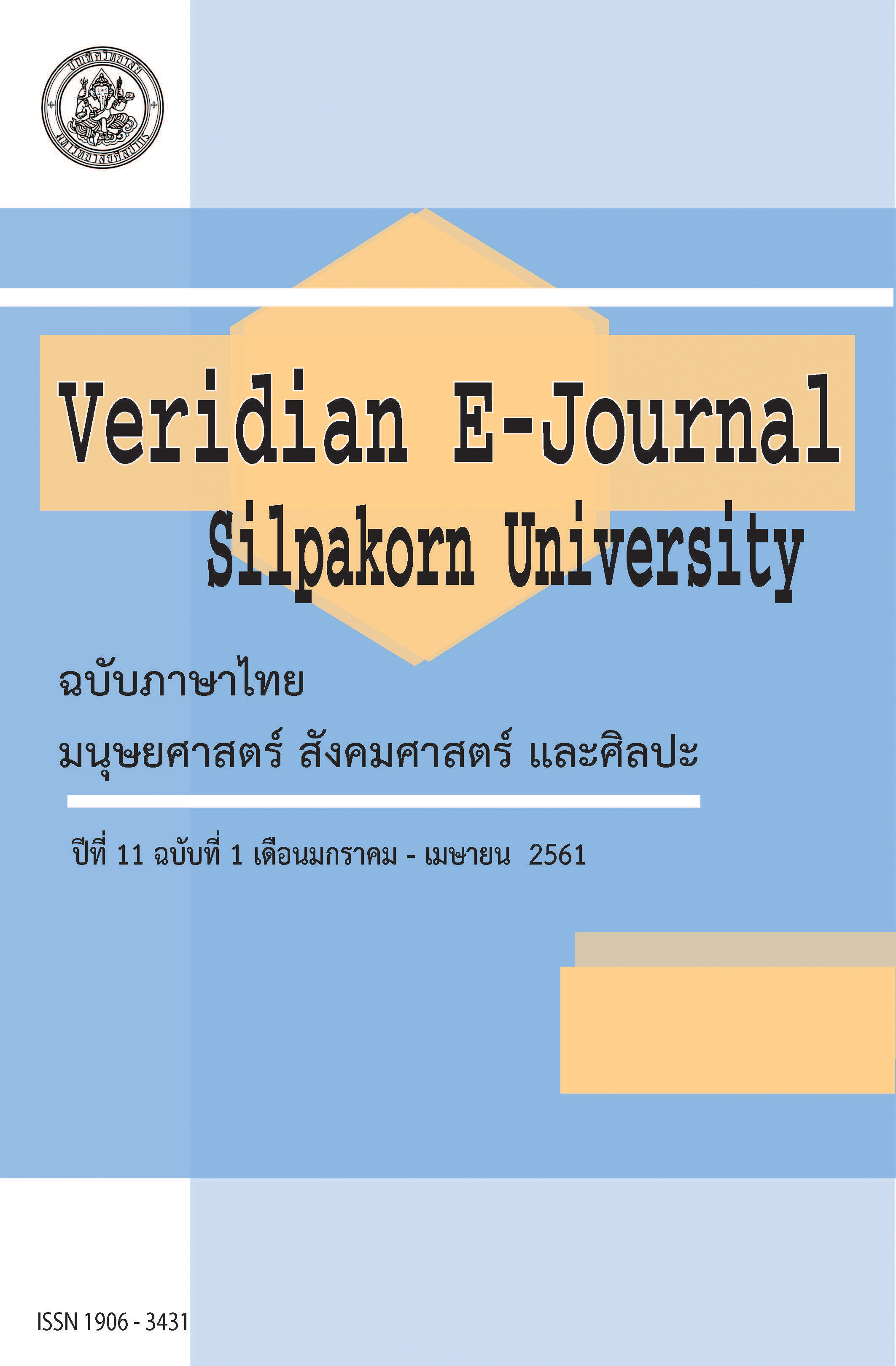การวิเคราะห์อภิมานงานวิจัยด้านนวัตกรรมการพัฒนาความคิดสร้างสรรค์ ของนักเรียนระดับประถมศึกษา (A Meta-Analysis Research On Creative Thinking Development Innovations Of The Elementary School Students)
Main Article Content
Abstract
การวิจัยครั้งนี้มีจุดประสงค์ 1) เพื่อประเมินคุณภาพงานวิจัยนวัตกรรมการพัฒนาความคิดสร้างสรรค์ของนักเรียนระดับประถมศึกษา 2) เพื่อศึกษาคุณลักษณะของงานวิจัยที่มีผลต่อค่าขนาดอิทธิพลของนวัตกรรมการพัฒนาความคิดสร้างสรรค์ของนักเรียนระดับประถมศึกษา และ 3) เพื่อสังเคราะห์องค์ความรู้เกี่ยวกับนวัตกรรมการพัฒนาความคิดสร้างสรรค์ของนักเรียนระดับประถมศึกษา งานวิจัยที่นำสังเคราะห์เป็นงานวิจัยเชิงทดลอง จำนวน 88 เล่ม เครื่องมือที่ใช้ประกอบด้วยแบบประเมินคุณภาพงานวิจัย และแบบบันทึกคุณลักษณะงานวิจัย ค่าขนาดอิทธิพลมีจำนวน 185 ค่า วิเคราะห์ข้อมูลด้วยสถิติเชิงบรรยาย การวิเคราะห์ความแปรปรวนทางเดียว การวิเคราะห์ถดถอยพหุคูณ และการวิเคราะห์เนื้อหา ผลการวิจัยพบว่า
- ผลการประเมินคุณภาพงานวิจัย พบว่า งานวิจัยส่วนใหญ่มีคุณภาพอยู่ในระดับดี (ร้อยละ74.60)
- ผลการวิเคราะห์ความแปรปรวนทางเดียว พบว่า ตัวแปรคุณลักษณะงานวิจัยที่ส่งผลต่อค่าขนาดอิทธิพลอย่างมีนัยสำคัญทางสถิติ ได้แก่ วัตถุประสงค์ของการวิจัย, ทฤษฎีความคิดสร้างสรรค์, องค์ประกอบความคิดสร้างสรรค์, ภูมิภาค, แหล่งที่มาของตัวอย่าง, ประเภทสมมติฐาน, การจัดหน่วยตัวอย่างเข้ากลุ่มแบบสุ่ม, การออกแบบวิจัยเชิงทดลอง, ประเภทสถิติ และสรุปผลการทดสอบสมมติฐาน
- ผลการวิเคราะห์พหุคูณ พบว่า ตัวแปรคุณลักษณะงานวิจัยที่อธิบายขนาดอิทธิพลได้อย่างมีนัยสำคัญทางสถิติ ได้แก่ จำนวนหน้าไม่รวมภาคผนวก, ความเป็นภูมิภาคตะวันออกเฉียงเหนือ, ความเป็นสังกัดสำนักงานคณะกรรมการการศึกษาขั้นพื้นฐาน, ความเป็นสังกัดองค์กรปกครองส่วนท้องถิ่น, จำนวนตัวแปรตาม, จำนวนกลุ่มทดลอง, จำนวนเครื่องมือที่ใช้ในการทดลอง, การวิเคราะห์ด้วย t-test dependent และการวิเคราะห์ด้วย MANOVA ตัวแปรทั้ง 9 ตัวแปรร่วมกันอธิบายความแปรปรวนในขนาดอิทธิพลได้ร้อยละ 41.11
- ผลการสังเคราะห์องค์ความรู้เกี่ยวกับนวัตกรรมในการพัฒนาความคิดสร้างสรรค์ของนักเรียนระดับประถมศึกษาสามารถแบ่งออกได้เป็น 9 กลุ่ม ที่มีแนวทางในการจัดการเรียนรู้ที่แตกต่างกัน ดังนี้ เน้นการพัฒนาความคิดสร้างสรรค์, เน้นการพัฒนาทักษะการคิด, เน้นการสร้างองค์ความรู้ด้วยตนเอง, เน้นกระบวนการแก้ปัญหา, เน้นทักษะปฏิบัติ, เน้นการบูรณาการ, เน้นการร่วมมือ, เน้นการเรียนรู้โดยใช้ประสาทสัมผัสหลายด้าน และสื่อการเรียนรู้
The purpose of this research were 1) to evaluate the researches quality on creative thinking development innovations of the elementary school students, 2) to study characteristics of research affecting the effect sizes of creative thinking development innovations of the elementary school students and 3) to synthesize knowledge form creative thinking development innovations of the elementary school students. The synthesized researches were 88 experimental researches The research instruments were research quality evaluative forms and research characteristics coding forms. There were 185 values of effect sizes. The data analysis included descriptive statistics, one-way ANOVA, multiple regression and content analysis. The finding were as follows:
- The result of evaluate the researches quality was found that most theses were of good quality (74.60%).
- 2. The result of one-way ANOVA found that research characteristic variables affecting to effect size which significantly were included research objectives, creative thinking theories, components of creative thinking, region, samples sources, types of hypothesis, random assignment, experimental designs, types of statistic and summary of hypothesis testing.
- The research characteristic variables which significantly accounted for the variation in the effect size were number of pages not include appendix, northeastern region, Office of the Basic Education Commission, Local administrative organization, number of dependent variables, number of experiment groups, number of research instruments, t-test dependent and MANOVA . There were 9 research characteristic variables could simultaneously explain 41.10 percents of variation in the effect size.
- The synthesis knowledge about creative thinking development innovations of the elementary school students were classified in 9 groups which focus on different learning approaches: creative thinking development, thinking skills, constructivism, problem-solving process, practical skills, integrated management, cooperative learning, create multisensory learning and instructional media.
